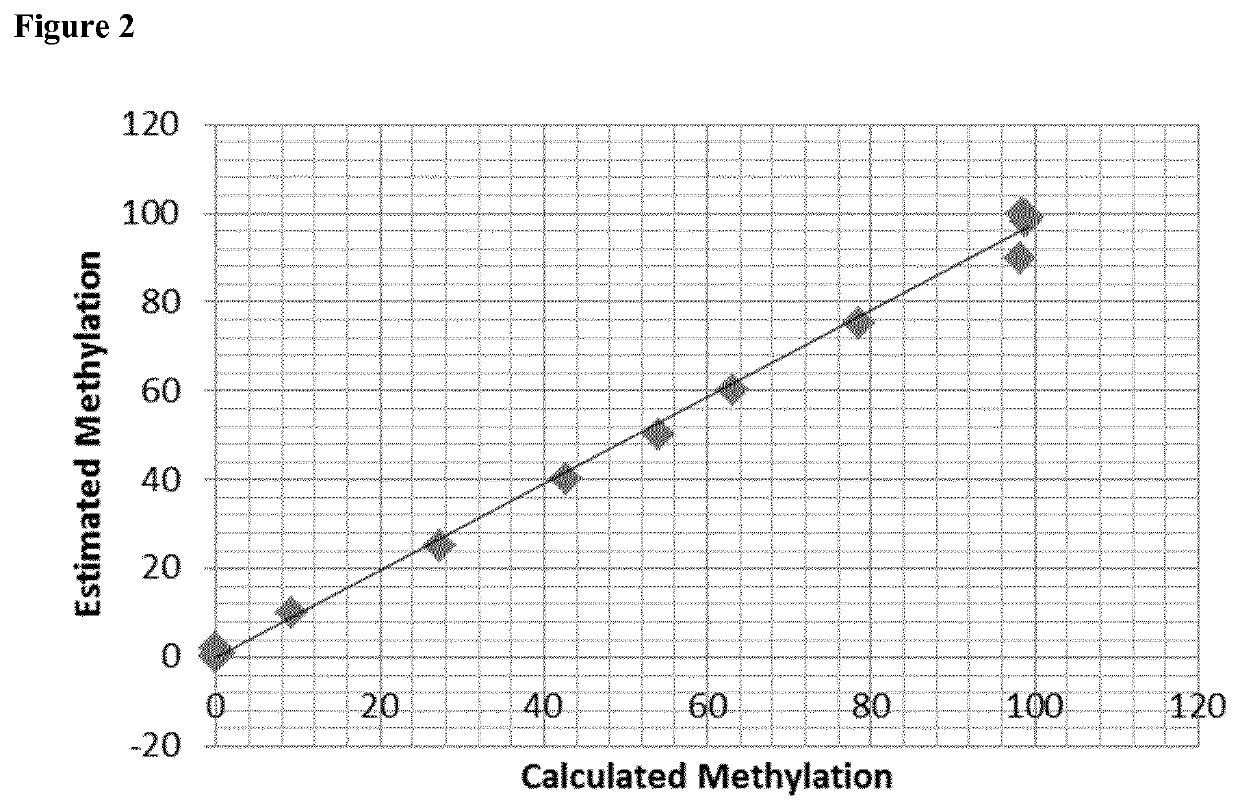ERGIC1 AS EPIGENETIC MARKER FOR THE IDENTIFICATION OF IMMUNE CELLS, IN PARTICULAR MONOCYTIC MYELOID-DERIVED SUPPRESSOR CELLS (mMDSCs)
a monocytic myeloid-derived suppressor cell and epigenetic marker technology, applied in the field of monocytic myeloid-derived suppressor cells (mmdscs), can solve the problems of poor patient prognosis and resistance to therapies, inability to distinguish between these two, and high infiltration of cancer tissues of mdscs
- Summary
- Abstract
- Description
- Claims
- Application Information
AI Technical Summary
Benefits of technology
Problems solved by technology
Method used
Image
Examples
example 1
[0055]In order to identify the target mMDSC subpopulation, qPCR was performed on bisulphite converted samples stemming from the human genomic region according to sequence AMP2505, SEQ ID No. 1. Relevant CpGs are indicated bold and underlined.
GAGGGAATGAGTAGGTGAACAAACGAGTGAGTTTTTCGCCTCACTCCCTGGCACTCGGCACCGAGGGCTCCGACAGGCTGGTGGCCAGGGCTGACCAGCCAGAGTTTCATCTAAAAGCCTCGATGGCTATTTTTGGGACAAATGACCCACCACTTCCAATGACTTGCTCCGAAATGGCATCTAATTTCATTAAGCCTTGGAAACAGTGACATCACAAGTGCCTGCCCGGTAGCCGCCCACATATGGCGAACCACAGAGTGATCCGAGATTCGTCTGCAAGAACAGGGGAGAACTAAGGTCCCAAGCAGCAAAAGTTAAAATAGCAAAGCTGAGGCATTCTGCTATGAAAAGAAATTACAGATGAAATCCATTAGTCAGACATTTCCAGCGGCAGTTTCCTTGCTTGGGAGCAGGGGAAGACGTGTTTATTCGGGGTTGGGCTCTGCAGCCATTCC
[0056]SEQ ID No. 2 represents the bisulfite converted (b2F), previously modified (CpG) sequence with conversion resistant CpG residues. Relevant CpGs are indicated bold and underlined.
AAAAAAATAAATAAATAAACAAACGAATAAATTTTTCGCCTCACTCCCTAACACTCGACACCGAAAACTCCGACAAACTAATAACCAAAACTAACCAACCAAAATTTCATCTAAAA...
PUM
| Property | Measurement | Unit |
|---|---|---|
| methylation frequency | aaaaa | aaaaa |
| resistance | aaaaa | aaaaa |
| current state | aaaaa | aaaaa |
Abstract
Description
Claims
Application Information
 Login to View More
Login to View More - R&D Engineer
- R&D Manager
- IP Professional
- Industry Leading Data Capabilities
- Powerful AI technology
- Patent DNA Extraction
Browse by: Latest US Patents, China's latest patents, Technical Efficacy Thesaurus, Application Domain, Technology Topic, Popular Technical Reports.
© 2024 PatSnap. All rights reserved.Legal|Privacy policy|Modern Slavery Act Transparency Statement|Sitemap|About US| Contact US: help@patsnap.com









